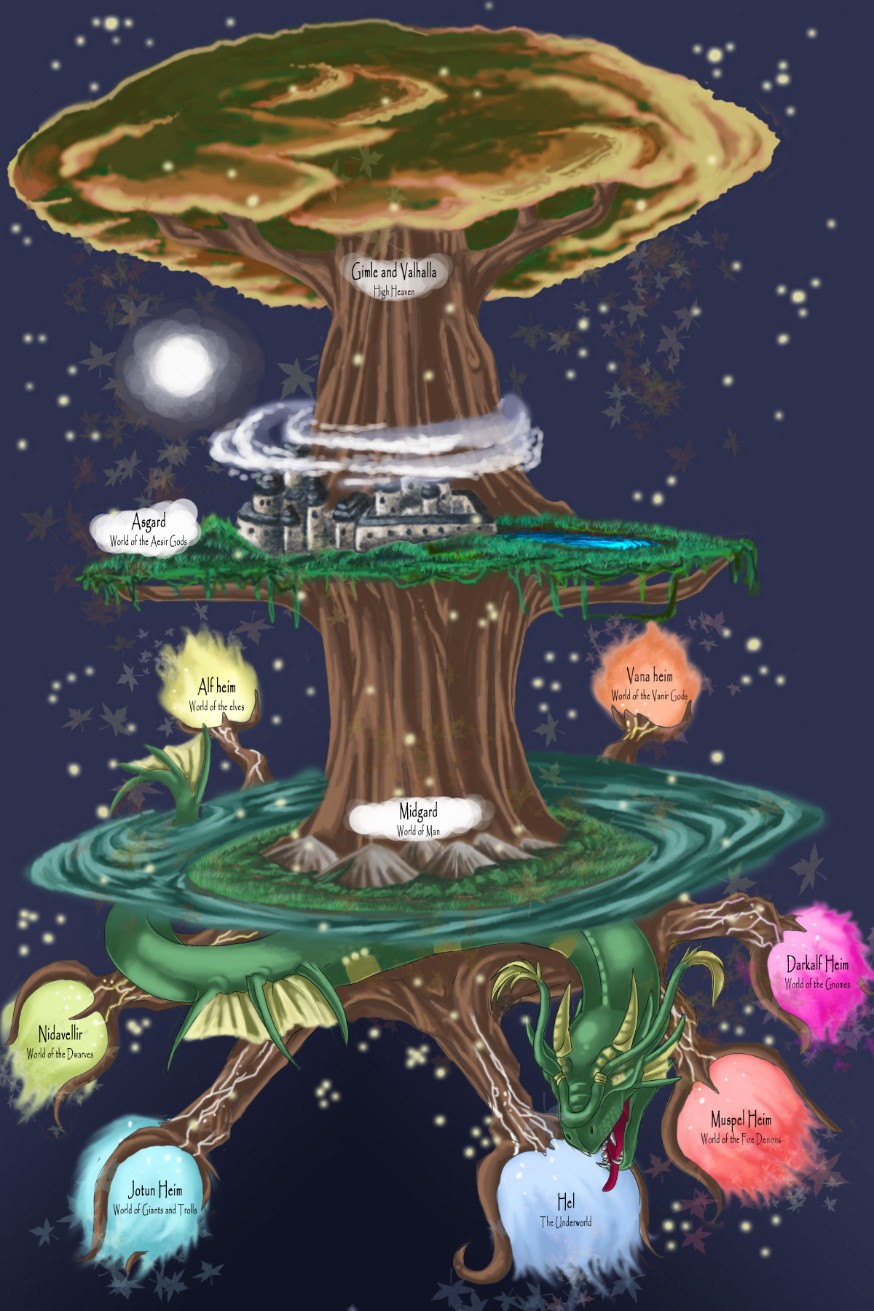Norse mythology is home to a vast and complex universe made up of nine interconnected worlds. These worlds are divided into three levels: Asgard, the realm of the gods; Midgard, the realm of humans; and Helheim, the realm of the dead. Each world is unique, with its own inhabitants, landscapes, and mythologies.
Asgard is the most well-known of the nine worlds, as it is the home of the gods. It is a realm of splendor and beauty, with shining halls and golden palaces. Midgard, on the other hand, is the realm of humans, where mortals live out their lives. It is surrounded by a giant serpent named Jormungandr, who is said to be so large that he can encircle the entire world.
The other seven worlds are Alfheim, the realm of the elves; Vanaheim, the realm of the Vanir gods; Nidavellir, the realm of the dwarves; Jotunheim, the realm of the giants; Muspelheim, the realm of fire; Niflheim, the realm of ice; and Helheim, the realm of the dead. Each world has its own unique characteristics and inhabitants, and they are all connected by the great tree Yggdrasil.
The nine worlds of Norse mythology are significant because they illustrate the vastness of the Norse universe and the interconnectedness of all things. They also provide insight into the Norse understanding of the afterlife, which was not seen as a final destination but rather as a continuation of the cycle of life and death.
Works Cited:
Gaiman, Neil. Norse Mythology. W. W. Norton Company, 2017.








